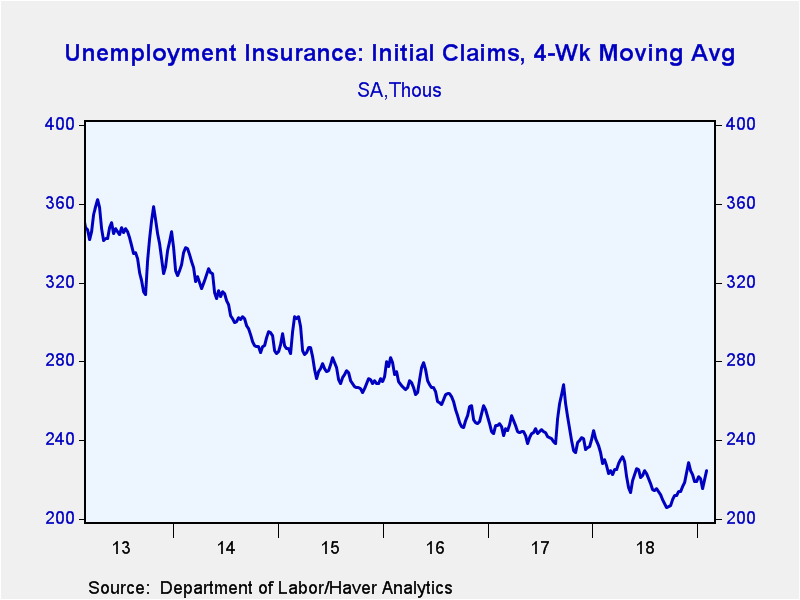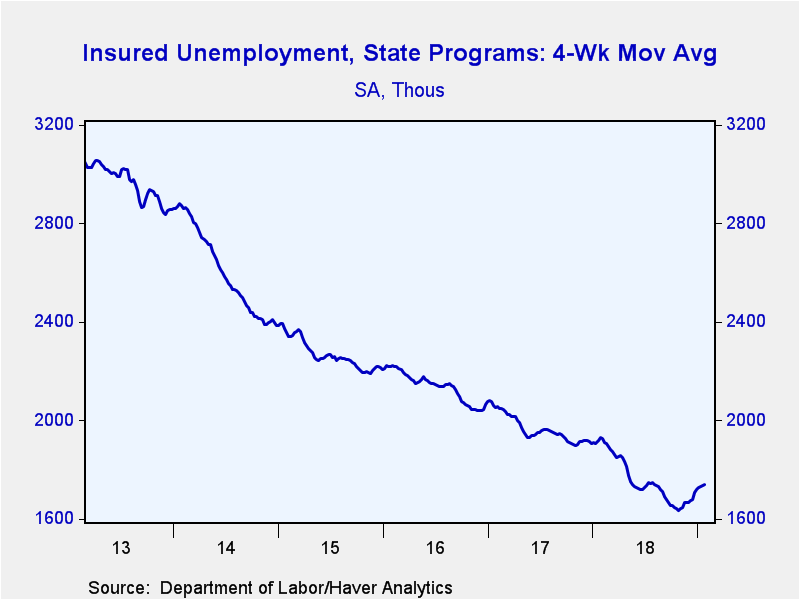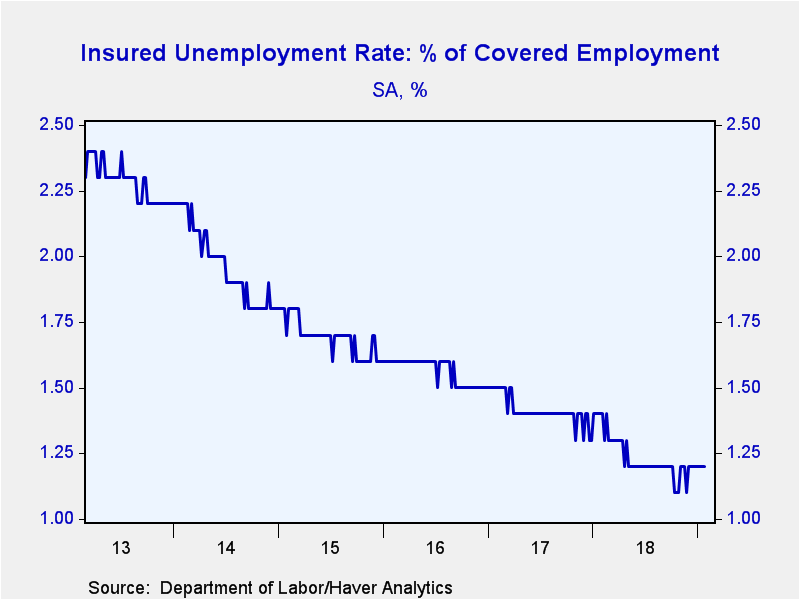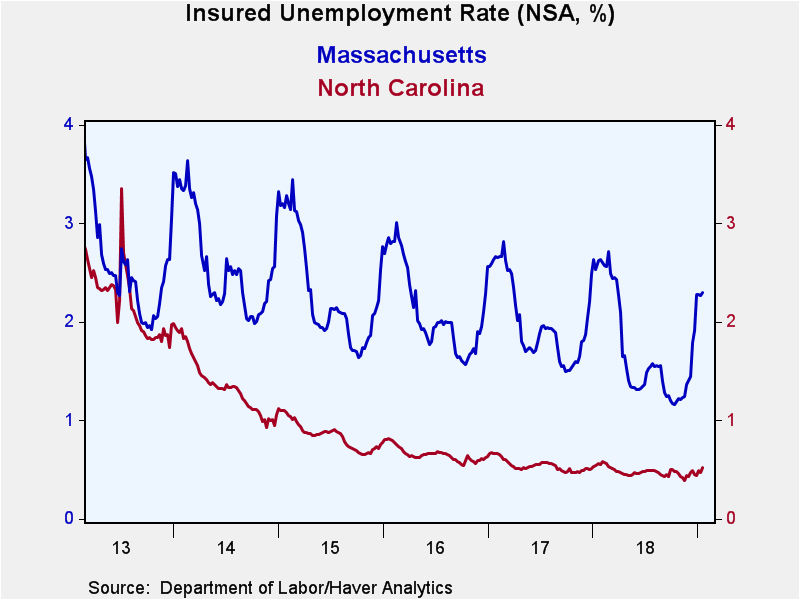 Global| Feb 07 2019
Global| Feb 07 2019U.S. Initial Claims for Unemployment Insurance Decline Sharply
by:Tom Moeller
|in:Economy in Brief
Summary
Initial unemployment insurance claims declined to 234,000 in the week ended February 2 after a jump to an unrevised 253,000 during the prior week. The shortfall reversed nearly half of the previous week's increase to the highest level [...]
Initial unemployment insurance claims declined to 234,000 in the week ended February 2 after a jump to an unrevised 253,000 during the prior week. The shortfall reversed nearly half of the previous week's increase to the highest level since September 2017. The Action Economics Forecast Survey expected 220,000 claims this week. The four-week moving average rose to 225,000, the highest level since early-December.
Continuing claims for unemployment insurance declined to 1.736 million in the week ended January 26 from 1.778 million the previous week. The four-week moving average of continuing claims increased to 1.741 million from 1.737 million in the prior week, up from a low of 1.641 million early in November.
The insured unemployment rate held steady at 1.2% in the week ended January 26, where it's been for two months.
Insured unemployment rates vary widely by state. These state data are not seasonally adjusted. During the week ending January 19 the lowest rates were in Florida (0.47%), North Carolina (0.52%), Tennessee (0.63%), Virginia (0.65%) and Georgia (0.66%). The highest rates were in Alaska (3.47%), New Jersey (2.72%), Montana (2.53%), Connecticut (2.50%) and Rhode Island (2.44%). High rates also were found in Pennsylvania (2.37%), Massachusetts (2.30%) and West Virginia (2.08%).
Data on weekly unemployment claims going back to 1967 are contained in Haver's WEEKLY database and are summarized monthly in USECON. Data for individual states are in REGIONW. The expectations figure is from the Action Economics Forecast Survey, carried in the AS1REPNA database.
| Unemployment Insurance (SA, 000s) | 02/02/19 | 01/26/19 | 01/19/19 | Y/Y % | 2018 | 2017 | 2016 |
|---|---|---|---|---|---|---|---|
| Initial Claims | 234 | 253 | 200 | 4.9 | 221 | 244 | 262 |
| Continuing Claims | -- | 1,736 | 1,778 | -9.2 | 1,766 | 1,967 | 2,135 |
| Insured Unemployment Rate (%) | -- | 1.2 | 1.2 |
1.4 |
1.2 | 1.4 | 1.6 |
Tom Moeller
AuthorMore in Author Profile »Prior to joining Haver Analytics in 2000, Mr. Moeller worked as the Economist at Chancellor Capital Management from 1985 to 1999. There, he developed comprehensive economic forecasts and interpreted economic data for equity and fixed income portfolio managers. Also at Chancellor, Mr. Moeller worked as an equity analyst and was responsible for researching and rating companies in the economically sensitive automobile and housing industries for investment in Chancellor’s equity portfolio. Prior to joining Chancellor, Mr. Moeller was an Economist at Citibank from 1979 to 1984. He also analyzed pricing behavior in the metals industry for the Council on Wage and Price Stability in Washington, D.C. In 1999, Mr. Moeller received the award for most accurate forecast from the Forecasters' Club of New York. From 1990 to 1992 he was President of the New York Association for Business Economists. Mr. Moeller earned an M.B.A. in Finance from Fordham University, where he graduated in 1987. He holds a Bachelor of Arts in Economics from George Washington University.










